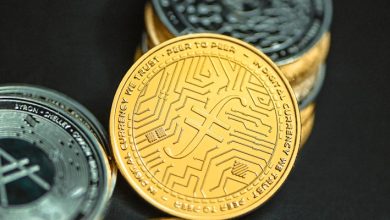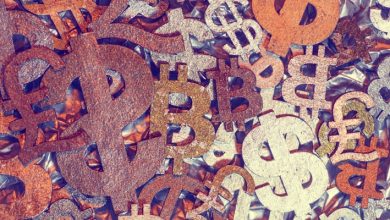What Are Synthetic Assets? A Guide to Tokenized Derivatives

- Understanding synthetic assets and their role in the world of finance
- Exploring the concept of tokenized derivatives and how they are revolutionizing investment opportunities
- Key features of synthetic assets and how they differ from traditional financial instruments
- The benefits and risks of investing in tokenized derivatives
- How synthetic assets are created and managed on blockchain platforms
- Regulatory considerations and challenges surrounding the use of synthetic assets in the market
Understanding synthetic assets and their role in the world of finance
Synthetic assets play a crucial role in the world of finance, offering investors a way to gain exposure to a wide range of assets without actually owning them. These tokenized derivatives are created through the use of smart contracts on a blockchain, allowing for the replication of the value and performance of real-world assets.
By using synthetic assets, investors can diversify their portfolios and hedge against risk more effectively. These digital tokens can represent anything from stocks and commodities to currencies and real estate, providing opportunities for investors to access markets that may otherwise be out of reach.
One of the key benefits of synthetic assets is their flexibility and accessibility. They can be traded 24/7, allowing for greater liquidity and faster settlement times compared to traditional assets. Additionally, the use of blockchain technology ensures transparency and security, reducing the risk of fraud and manipulation.
As the world of finance continues to evolve, synthetic assets are likely to play an increasingly important role in the global economy. By offering a more efficient and cost-effective way to trade and invest in a wide range of assets, these tokenized derivatives are poised to revolutionize the way we think about finance.
Exploring the concept of tokenized derivatives and how they are revolutionizing investment opportunities
Tokenized derivatives have been gaining popularity in the world of finance as they offer investors new and innovative ways to participate in the market. By representing traditional financial instruments such as stocks, commodities, or bonds as digital tokens on a blockchain, tokenized derivatives provide a more efficient and accessible way to invest in these assets.
One of the key advantages of tokenized derivatives is their ability to fractionalize ownership, allowing investors to purchase smaller portions of assets that were previously out of reach. This opens up investment opportunities to a wider range of individuals and reduces the barrier to entry for those looking to diversify their portfolios.
Moreover, tokenized derivatives can be traded 24/7 on decentralized exchanges, providing liquidity and flexibility that traditional markets may not offer. This round-the-clock trading allows investors to react quickly to market changes and seize opportunities as they arise.
Additionally, tokenized derivatives offer increased transparency and security through the use of blockchain technology. Each transaction is recorded on a public ledger, ensuring that all parties have access to the same information and reducing the risk of fraud or manipulation.
Overall, the concept of tokenized derivatives is revolutionizing investment opportunities by making traditional assets more accessible, liquid, and secure. As the popularity of blockchain technology continues to grow, we can expect to see even more innovation in this space in the years to come.
Key features of synthetic assets and how they differ from traditional financial instruments
Synthetic assets have several key features that set them apart from traditional financial instruments. One of the main differences is that synthetic assets are tokenized derivatives, which means they are represented by digital tokens on a blockchain. This allows for greater accessibility and liquidity, as these assets can be traded on decentralized exchanges without the need for intermediaries.
Another important feature of synthetic assets is their ability to track the value of real-world assets, such as stocks, commodities, or fiat currencies, without actually owning the underlying asset. This is achieved through the use of smart contracts, which are self-executing contracts with the terms of the agreement directly written into code.
Furthermore, synthetic assets can be created to mimic the performance of a wide range of assets, including those that may be difficult to access or trade in traditional markets. This opens up new opportunities for investors to diversify their portfolios and hedge against risks in a more efficient manner.
Overall, synthetic assets offer a new way for investors to gain exposure to various asset classes in a decentralized and efficient manner. By leveraging blockchain technology and smart contracts, these assets provide greater flexibility, accessibility, and transparency compared to traditional financial instruments.
The benefits and risks of investing in tokenized derivatives
Investing in tokenized derivatives offers a range of benefits, but it also comes with its fair share of risks. It is essential to understand both aspects before diving into this market.
One of the main advantages of tokenized derivatives is the potential for high returns on investment. By leveraging the underlying assets, investors can amplify their gains and diversify their portfolios without the need for substantial capital. Additionally, tokenized derivatives provide access to a wide range of assets, including cryptocurrencies, stocks, commodities, and more, allowing investors to take advantage of various market opportunities.
On the flip side, investing in tokenized derivatives also comes with inherent risks. The most significant risk is the potential for significant losses, as leverage can amplify both gains and losses. Additionally, the market for tokenized derivatives is relatively new and less regulated compared to traditional financial markets, leading to higher volatility and potential for fraud. Investors must carefully assess their risk tolerance and conduct thorough research before investing in tokenized derivatives to mitigate these risks.
Overall, investing in tokenized derivatives can be a lucrative opportunity for investors looking to diversify their portfolios and potentially earn high returns. However, it is crucial to understand the risks involved and proceed with caution to avoid significant losses. By weighing the benefits and risks carefully, investors can make informed decisions and navigate the tokenized derivatives market effectively.
How synthetic assets are created and managed on blockchain platforms
Creating and managing synthetic assets on blockchain platforms involves a series of steps to ensure the proper functioning and security of these tokenized derivatives. One common method is through the use of smart contracts, which are self-executing contracts with the terms of the agreement between buyer and seller directly written into code. These smart contracts can be programmed to automatically create synthetic assets based on certain parameters and conditions.
Another way synthetic assets are created and managed is through the use of decentralized finance (DeFi) platforms. These platforms allow users to mint synthetic assets by locking up collateral in the form of cryptocurrencies. This collateral is then used to back the value of the synthetic asset, ensuring that it remains pegged to the underlying asset it is tracking.
Once created, synthetic assets can be traded on decentralized exchanges (DEXs) that support these tokenized derivatives. Traders can buy and sell synthetic assets just like any other cryptocurrency, with the added benefit of being able to gain exposure to traditional assets such as stocks, commodities, and fiat currencies without actually owning them.
In addition to trading, synthetic assets can also be managed through rebalancing mechanisms built into the smart contracts that govern their creation. These mechanisms help ensure that the synthetic asset remains properly collateralized and pegged to its underlying asset, reducing the risk of liquidation or loss of value.
Overall, the creation and management of synthetic assets on blockchain platforms offer a new and innovative way for traders and investors to gain exposure to a wide range of assets in a decentralized and secure manner. By leveraging smart contracts and DeFi platforms, synthetic assets provide a flexible and efficient way to diversify portfolios and hedge against risks in traditional financial markets.
Regulatory considerations and challenges surrounding the use of synthetic assets in the market
Regulatory considerations and challenges surrounding the use of synthetic assets in the market are crucial factors to keep in mind when dealing with tokenized derivatives. As these financial instruments continue to gain popularity, regulators around the world are paying closer attention to ensure that they are being used in a compliant and transparent manner.
One of the main concerns regulators have is the potential for market manipulation and fraud when it comes to synthetic assets. Due to their complex nature and the use of smart contracts, there is a risk that bad actors could exploit loopholes in the system to their advantage. This has led to calls for stricter regulations and oversight to protect investors and maintain the integrity of the market.
Another challenge is the lack of standardized regulations for synthetic assets across different jurisdictions. As these assets are digital and can be traded globally, it can be difficult to enforce consistent rules and guidelines. This lack of harmonization can create confusion and uncertainty for market participants, making it harder to ensure compliance with all relevant laws and regulations.
Overall, while synthetic assets offer exciting opportunities for innovation and diversification in the market, it is important to proceed with caution and stay informed about the regulatory landscape. By staying compliant and transparent in your use of tokenized derivatives, you can help contribute to a more secure and stable financial ecosystem for all stakeholders involved.



